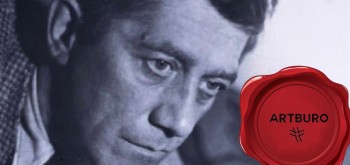Oskar Kokoschka
Austrian, 1886–1980

Publication Excerpt: Starr Figura, German Expressionism: The Graphic Impulse, New York, The Museum of Modern Art, 2011
Painter, printmaker, dramatist. Performance of his early Expressionist play, Murderer, Hope of Women, at the 1909 Kunstschau exhibition scandalized Vienna. Had been promoted early on by the Wiener Werkstätte, which published his fairy tale Die träumenden Knaben (The Dreaming Boys) in 1908, the first of several books he wrote and illustrated. But friendship with architect and critic Adolf Loos decisively influenced his turn away from decorative influences, toward an expressive, gestural style of painting in portraits and other figurative scenes. From 1910, was in contact with Expressionist circles in Berlin, including Herwarth Walden, who reproduced many of Kokoschka’s drawings and texts in his journal Der Sturm. Volunteered for Austrian army in World War I; seriously wounded in 1915. From 1916 to 1931, was supported by Paul Cassirer (and following his death, his gallery), who published many of his prints. Moved to Dresden in 1917 and taught at the art academy there from 1919 until 1923. Later resettled in Vienna, where he lived from 1931 to 1934.
Labeled a “degenerate” artist by the Nazis, who confiscated 417 works from German museums. To avoid Nazis, fled to Prague (1934–38), then London (1938–53). Spent final years, from 1953 to 1980, in Switzerland.
Ultimately made more than 560 prints, approximately one-third in the 1910s and 1920s. Most are lithographic or photolithographic portraits or book illustrations, which, like his drawings, feature a nervous, electrically charged style.


Custom Hermes Birkin bag Oscar Kokoshka by ARTBURO Personalization 
Custom Hermes Birkin bag Oscar Kokoshka by ARTBURO Personalization 
Custom Hermes Birkin bag Oscar Kokoshka by ARTBURO Personalization 
Custom Hermes Birkin bag Oscar Kokoshka by ARTBURO Personalization 
Custom Hermes Birkin bag Oscar Kokoshka by ARTBURO Personalization 
Custom Hermes Birkin bag Oscar Kokoshka by ARTBURO Personalization 
Custom Hermes Birkin bag Oscar Kokoshka by ARTBURO Personalization 
Custom Hermes Birkin bag Oscar Kokoshka by ARTBURO Personalization 
Custom Hermes Birkin bag Oscar Kokoshka by ARTBURO Personalization 
Custom Hermes Birkin bag Oscar Kokoshka by ARTBURO Personalization 
Custom Hermes Birkin bag Oscar Kokoshka by ARTBURO Personalization 
Custom Hermes Birkin bag Oscar Kokoshka by ARTBURO Personalization 
Custom Hermes Birkin bag Oscar Kokoshka by ARTBURO Personalization 
Custom Hermes Birkin bag Oscar Kokoshka by ARTBURO Personalization 
Custom Hermes Birkin bag Oscar Kokoshka by ARTBURO Personalization 
Custom Hermes Birkin bag Oscar Kokoshka by ARTBURO Personalization 
Custom Hermes Birkin bag Oscar Kokoshka by ARTBURO Personalization

